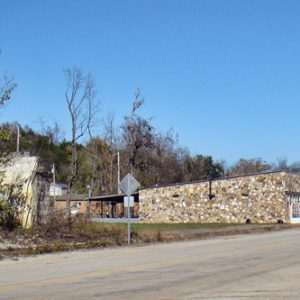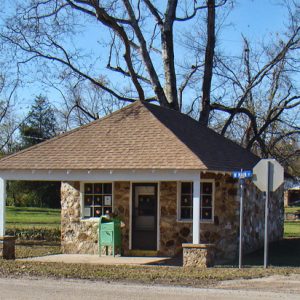calsfoundation@cals.org
Williford (Sharp County)
| Latitude and Longitude: | 36°15’10″N 091°21’21″W |
| Elevation: | 328 feet |
| Area: | 0.35 square miles (2020 Census) |
| Population: | 79 (2020 Census) |
| Incorporation Date: | December 8, 1914 |
Historical Population as per the U.S. Census:
|
1810 |
1820 |
1830 |
1840 |
1850 |
1860 |
1870 |
1880 |
1890 |
1900 |
|
– |
– |
– |
– |
– |
– |
– |
– |
– |
– |
|
1910 |
1920 |
1930 |
1940 |
1950 |
1960 |
1970 |
1980 |
1990 |
2000 |
|
– |
357 |
279 |
272 |
213 |
195 |
175 |
169 |
69 |
63 |
|
2010 |
2020 |
|
|
|
|
|
|
|
|
|
75 |
79 |
|
|
|
|
|
|
|
|
Williford is a small community located in the eastern part of Sharp County near the Spring River, one of Arkansas’s most popular streams for recreational floating. During the early twentieth century, it was one of the county’s largest and fastest-growing towns, but since then it has experienced a steady decline resulting in an almost nonexistent business district and a population of fewer than eighty citizens.
While the earliest inhabitants of the area were Native Americans, the first white settler, Jeremiah Pitt Baird, established his homestead on the banks of the Spring River in 1841. Shortly after he settled his family on the opposite side of the river of the present-day town, others began to move into the area. Among those was Ambrose Williford, who became a prominent land owner after whom the town was named. In the community’s earliest days, homes were established on both sides of the river, with the town eventually being established on the north side.
With the outbreak of the Civil War, many local men joined Confederate units raised in the area. Two significant military actions occurred in the area. The first was the Skirmish at Martin’s Creek on January 7, 1864, and the second was the Skirmish at Morgan’s Mill on February 9, 1864. As many of the organized military units moved out of the area, local home guard forces were formed to combat lawless bands that remained.
Significant growth came in the years following the Civil War. By 1870, 275 people lived in the town. Much of the growth was stimulated by the coming of the railroad. The Kansas City, Fort Scott, Springfield and Memphis Railroad Company began construction of the line running from Memphis, Tennessee, to Springfield, Missouri, in 1870; it was completed on July 4, 1883. On October 1, 1883, the first train to pass through Williford attracted spectators from miles around. A station was soon built, and the town became a center of local shipping and commerce. The rail line later became part of the Frisco Railroad. The tracks are still in use today.
A major contributor to local growth was the establishment of a limestone quarry east of town in 1884. Many of the town’s merchants sold goods to the workers. Ownership of the operation changed, and a new quarry was opened west of town where a better grade of stone was found. A work camp of fourteen company houses was constructed, with each being painted green, resulting in the name Greenville. The local economy prospered, with merchants selling goods to the workers and many of the townspeople also working at the quarry. Forty to fifty railroad cars of stone were shipped each day.
By 1890, the town consisted of three general stores, a saloon, a cotton gin, a blacksmith shop, a one-room schoolhouse, a doctor’s office, and a post office. By the turn of the century, the population more than doubled. In 1907, a steel frame bridge was constructed across the Spring River, stimulating growth. The Sharp County Bank was established by 1911, and, in 1912, a ten-room hotel was opened for business. Finally, on December 8, 1914, the town was officially incorporated.
Flooding of the town has always been a yearly threat. In 1915, the town sustained major damage, and the river bridge was washed out. It was soon rebuilt, and, by the mid-1920s, the town had more than twenty-five businesses. A major fire destroyed seven of those in the spring of 1929. Most did not rebuild.
The first school, which was built in the late 1870s, was a log one-room schoolhouse. One of the first teachers, J. J. Bellamy, later became speaker of the Arkansas House of Representatives; in 1909, he introduced the bill that created the four state agricultural colleges. A new two-story frame building was constructed in 1890 to accommodate growth in the student population. The second floor was used for school and lodge meetings. A more substantial two-story building built of concrete blocks was completed in 1915, with the grade school on the ground floor and the high school on the second. The next school, the oldest building of which was a project of the Depression-era Works Progress Administration, was completed in the 1941. This building housed junior and senior high students. Superintendent David Mullins (1932–1935) later became president of the University of Arkansas (UA) in Fayetteville (Washington County). The elementary students attended classes in a complex constructed in 1971. The school dodged the state consolidation movement until 2004, when they merged with the Oak Ridge Central school system to become the Twin Rivers school system; Twin Rivers was, in turn, closed in 2010.
Only two major religious denominations have held services in Williford. A Methodist church was built in 1910. In 1992, the building was listed on the National Register of Historic Places. The Church of Christ was established in 1912. Only the Church of Christ continues to hold services.
The growth of the town has always been tied to the railroad, whose tracks run not more than 100 yards from the business district. With the decline of passenger service in the 1960s and the development of roads and highways as an alternate means of trade and travel, town growth became stagnant. The population remained fairly steady, at approximately 180 during the 1960s, 1970s, and 1980s. However, with little new growth, the population dropped to sixty-three by the year 2000 (although it rose to seventy-five by the 2010 census). The proposed construction of the Bell Foley Dam on the nearby Strawberry River in the late 1960s brought some hope for renewed growth, and work began on a vacation resort near the town in anticipation of the lake. However, the controversial dam was never built. In the twenty-first century, most of the old business buildings are vacant and in ruins.
For additional information:
Garner, Glenna. “Yesterday’s Williford.” Sharp County Journal 4 (April 1988): 1–56.
A History of One-Room Schoolhouses of Sharp County: Country School Memories. Mount Vernon, IN: Windmill Publications, 1993.
Moore, Caruth Shaver. Early History of Evening Shade and Sharp County. Evening Shade, AR: C. S. Moore, 1979.
Mike Polston
Encyclopedia of Arkansas History & Culture
















The Crawford family was settled on the south side of Spring River near the site of Williford by 1827. Moses Crawford moved there from Rutherford County, Tennessee, in about 1825. He died there in 1832 and is buried in the Crawford cemetery. Moses’s son Colby, his grandson Moses S., and great-grandson Wann Moses Crawford are also buried there. The cemetery is on part of what was Crawford land. Part of the original Crawford land is still owned by the Crawford family. They may not have been the first family to settle there, but the Crawfords were among the earliest settlers in the area around Williford.
The Flood of 1982 greatly reduced the population of this town.